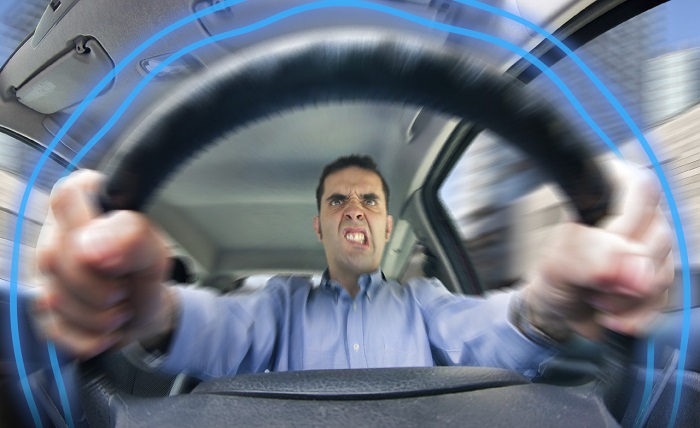Shaking car is a dangerous thing. If you experience this on the road, better stop and investigate the possible problem. Today we’ll tell you about all reasons that may cause your car vibration or shacking on the road.
Of course, it will help if you understand the nature of shacking. If it shakes on a certain gear, then you should check the transmission. If it starts shacking on certain RPM level, check the engine. But often the problem is in other things.

We’ll provide a kind of checklist for drivers so that they could easily find the problem and understand if it’s safe to drive further.
Type of shaking and vibration
For better understanding what is going on with your vehicle you’ll need to check the type of shacking. If the car shakes when you drive, suspension units or wheels may be the issue. If it vibrates when you start the engine, you’ll need to check the engine – one of the cylinders may not work, for example. If the vehicle shakes when you brake, it’s quite obvious that you’ll need to check the brake disks and pads.
Let’s start our checklist with a more detailed description of what can actually cause a car vibration in different conditions.
1. Tire problems
The first reason to check in the car is possible problem with tires. They can be underinflated or overinflated. That will cause unusual experience when driving on bad roads. Flat tire will create huge vibration and loss of steering control. But even if the tire isn’t flat, just underinflated, it can cause vibration, especially on speed over 40 mph.
Uneven tire wear and defects can also be the issue. You won’t feel problems in low speed, but as soon as your car rushes over 60 mph, tires will show their problems. It’s not safe to drive fast if the tires have any defects. And it’s prohibited to drive with flat tires.
If the tires are bald, you can also experience problems with driving. Firstly, it’s illegal to drive with bald tires. Secondly, it’s highly dangerous. So you better check the tires before the season and buy new ones if the old tires are done.
If the vibration comes from tires, it will usually be felt when you drive over 40 mph and it will become worse as you accelerate. Usually, the shacking isn’t that bad, but you still feel it.
2. Wheels
Unbalanced wheel is one of the most popular problems causing car shaking. You aren’t supposed to experience any problems when driving in the city with the slow speed. But as soon as you accelerate to 60 mph and more, the unbalanced wheels will remind you that you have to repair them. The car start shaking intensively after 80 mph, and drivers usually decide to drive slowly, so that they couldn’t feel the intense vibration.
But be very careful. If the wheel is unbalanced, it may be the reason of suspension problems and even wheel mounting troubles. If you noticed that your car shakes on high speeds, better reduce the speed of up to 40 mph and change your route to the nearest service center.
Also damaged wheels will show exactly the same problems. If the wheel is bent, broken, has changed shape, it’s not safe to drive. The best option is to use your spare wheel.
3. Wheel bolts
If your car starts shaking on low speed and the vibration gets unbearable when you drive 40 mph, it shows that the problem occurred with wheel bolts or nuts. Stop driving immediately, because one of the wheels can just fall off if you continue your journey. Park the car safely and check the nuts or bolts.
Driving with unfastened wheel bolts is highly dangerous for your health and for the car. The suspension parts may be broken fast and the wheel mounting system may get out of order, so you’ll need to spend quite a lot of time and money to repair it. It’s a good idea to check if the service workers tightened the bolts well enough after visiting service station.
4. Worn joints
Ball joints that went out of order will cause shaking and vibration on higher speed. They will also produce knocking sound when you turn sharply. If the joints are broken, you better stop driving the car. You can still move to the service station if it’s not so far away, but move slowly.
Ball joints cause bad vibration when they are completely worn out. If they fall apart, you won’t be able to drive the car, as the torque won’t be transferred to the wheels. If you hear a special noise when turning, get ready to change the ball joints before they start making problems for you.
5. Broken suspension parts
If one of the shock absorbers is broken, it can create shaking. It can also create different noise types that will tell you that there is a problem with suspension. Shacking may also occur if there is a problem with suspension arms of with any fastening.
One more option is that the suspension mounting points are broken. This may happen with old cars that have lots of rust on their bodies. The mounting place can get rusty, so the bolts can’t hold any more. This means you are about to spend a lot of money for body repair. Vibration and sounds may be the consequences of problems with both front and rear suspension parts.
6. Steering
Steering rack and rods can also cause vibration and shacking.
If the steering rack went out of order, the steering wheel may shake. Sometimes you can also feel some vibration on pedals because they are usually mounted on the same metal plate with the steering rack.
Sterring rods and rod ends may also cause troubles. When they are broken, you’ll feel problems with getting the car drive in a needed direction. It will always try to change the direction and put you in a dangerous situation. In addition, the broken steering parts may cause bad vibration which you will feel on steering wheel. Some noise can also be heard. It’s dangerous to keep driving the car if your steering system is broken.
7. Toe and camber
Surprisingly, many car owners don’t know that their cars need a special kind of service that is often omitted during regular servicing. Toe and camber should be regulated at least once per year. It’s better to check the angles of wheel mounting every half a year so that the tires could live longer.
Usually, cars with bad angles of tire location show poor steering. Vibration and shaking occur when you accelerate to more than 60 mph. Shaking may be minor if the angles are changed slightly.
8. Engine
Engine may shake in a couple of situations.
The most popular problem occurs when the engine mounting and support cushions are broken. You may check it by shacking the engine with your own hands. If the engine shakes too much, the cushions are worn out. If the engine shakes and bumps over some other parts under the hood of your car, the mounting system needs complete revision.
Also, problems may occur when one of the cylinders doesn’t work. This may be the consequence of bad troubles like piston burnout or crack in the block of cylinders. But usually, the thing is in spark plugs or wires.
Electric system may also cause problems with engine work. If one of the cylinders doesn’t work, the engine will shake all the time and it will also lose power.
9. Transmission
Again, transmission mounting and support cushions should be checked first. Then, check the joints. If the car shakes during acceleration and accelerates with jerks, check the transmission itself. In robotic transmissions like Ford’s Powershift or Volkswagen’s DSG clutch system may be broken. In traditional automatic transmission shaking may be the sign of soon gearbox death. But sometimes oil change can prolong the life of the transmission and help you deal with the problem of shaking and jerking.
10. Brake pads and disk
If your car start shaking or vibrating when you brake, the most possible reason is in brake disk. It can be damaged, worn out or bent. Also, if the brake pads are worn out, they can cause shaking. In many cars you can check it easily. Just put your finger on the surface of brake disk and check if there are some damages, scratches. If the disk has deep groove in the working surface, you’ll probably need to change it.
If the brakes in your car cause shaking or vibration, don’t continue driving the vehicle. It’s extremely dangerous. Brake system needs special checks every time you service your car.
11. Axles
In majority of cars there are two axles that join the transmission with the wheels. If one of the axles is bent, it can cause big problems and damages. It usually starts shaking when you speed up to more than 60 mph. But it all depends on how badly the axle is bent. The damaged axle can easily get the gearbox our of order or create additional problems with suspension. If the vibration is huge and you can feel it even on slow speed, better stop driving the car. The repair won’t be that expensive and long lasting, but to drive the vehicle further isn’t safe in such case.
12. Fuel
Sometimes problems may be caused by fuel quality. For example, if you buy diesel instead of gasoline on petrol station, the engine will start shaking and vibrating and then it may just go dead. If you use bad quality fuel, the fuel filter will become dirty immediately, and it will be quite hard for a fuel pump to ensure needed pressure in the system. This may cause low fuel pressure in fuel injectors which may result in shaking and vibration.
Verdict and tips
As you see, there are quite a lot of possible technical problems that may cause vibration and shaking of the car when driving. You shouldn’t keep driving if you feel bad vibration and hear some noise. Better check the vehicle using our checklist and decide whether it’s safe for you to keep going.
In majority of cases, you will need to slowly drive to the nearest service station and then order a complete investigation to understand the real reason of shaking.
About the authors
The CarAraC research team is composed of seasoned auto mechanics and automotive industry professionals, including individuals with advanced degrees and certifications in their field. Our team members boast prestigious credentials, reflecting their extensive knowledge and skills. These qualifications include: IMI: Institute of the Motor Industry, ASE-Certified Master Automobile Technicians; Coventry University, Graduate of MA in Automotive Journalism; Politecnico di Torino, Italy, MS Automotive Engineering; Ss. Cyril and Methodius University in Skopje, Mechanical University in Skopje; TOC Automotive College; DHA Suffa University, Department of Mechanical Engineering






Add comment